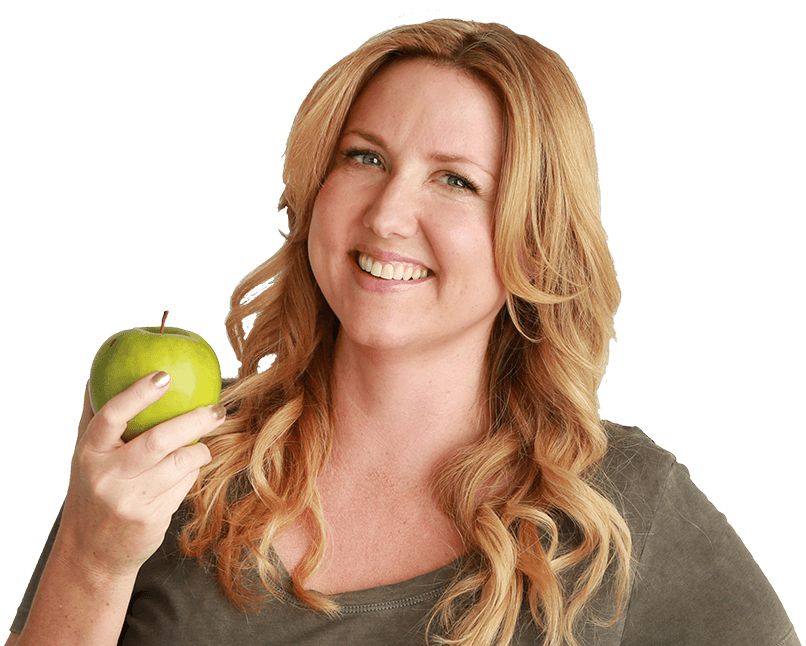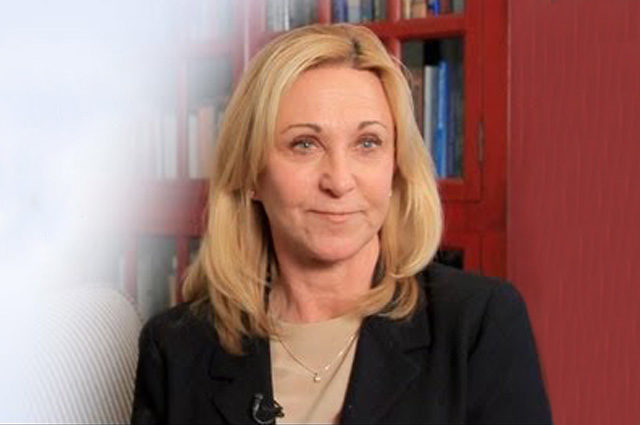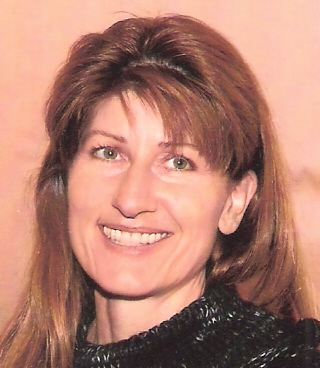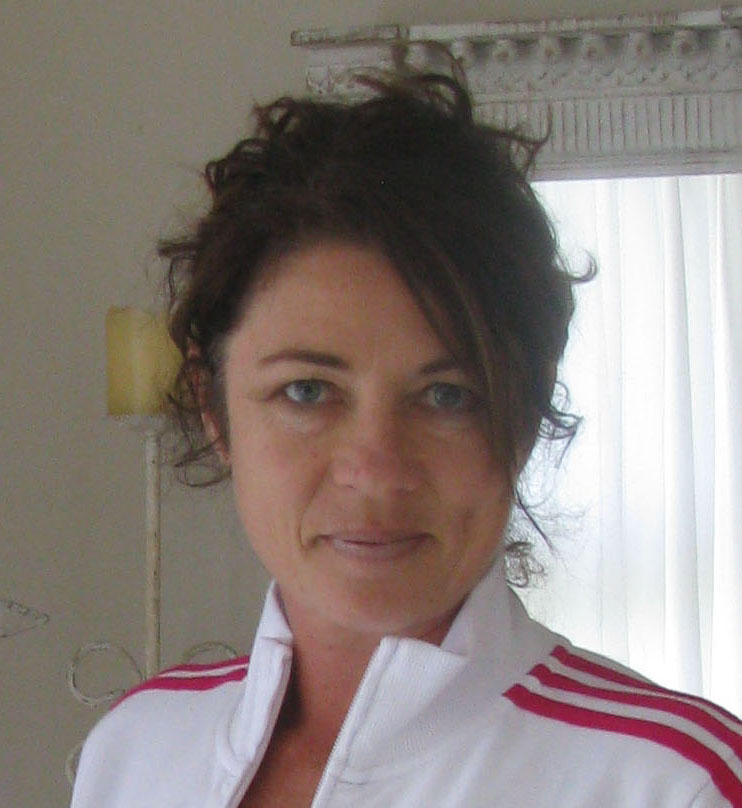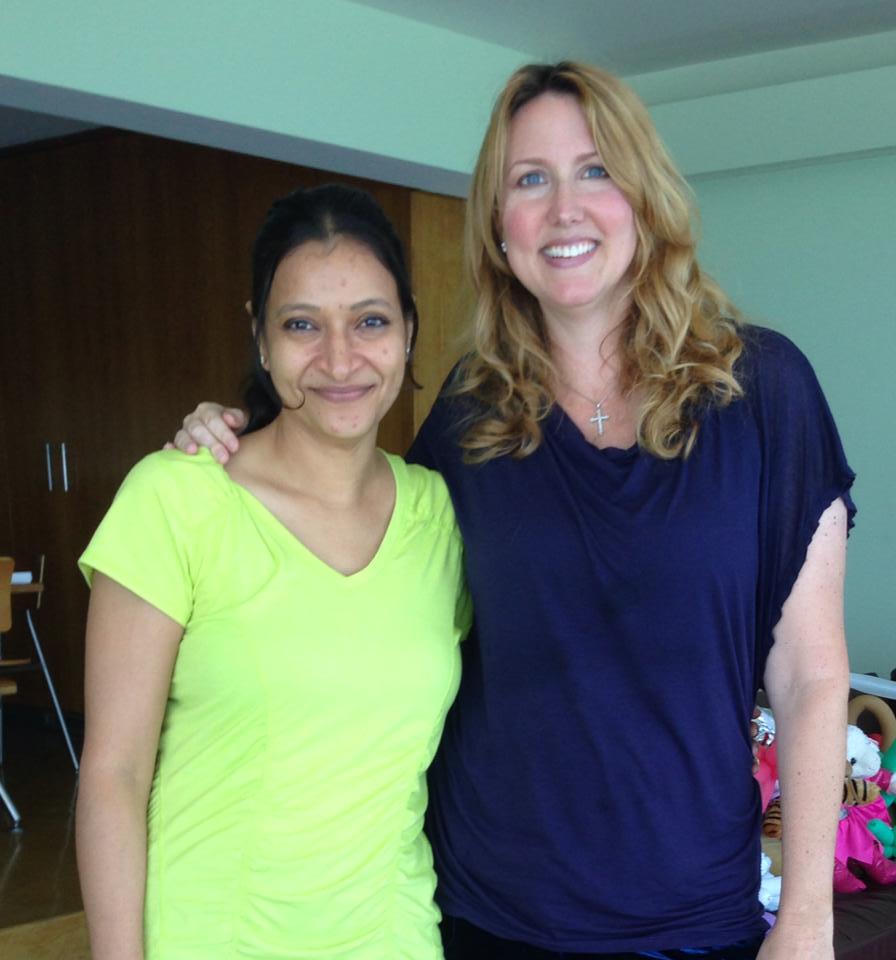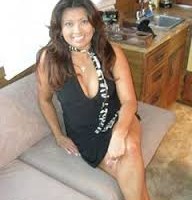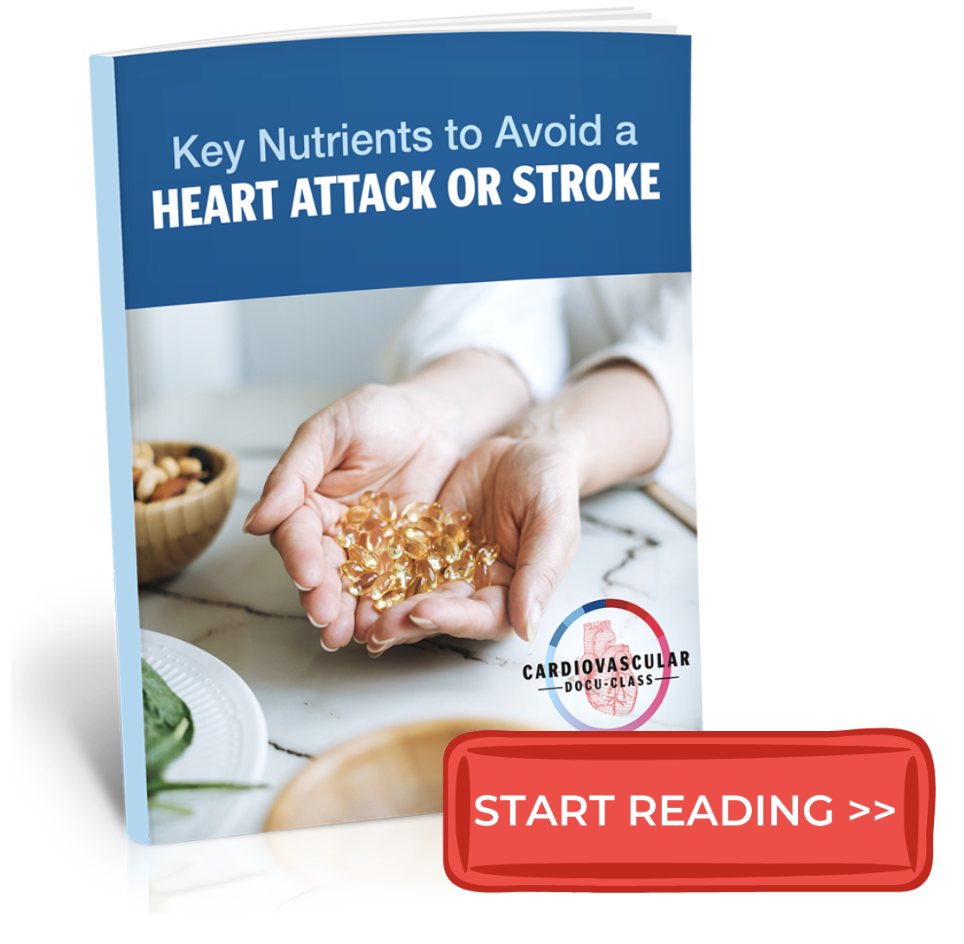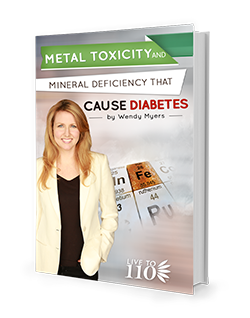Listen
Listen to this podcast or watch the video. CLICK HERE
Transcript
- 03:49 About Janice Salmon
- 05:20 SureTouch & Thermography
- 07:29 Dangers of Mammograms
- 12:41 More about SureTouch
- 14:16 Detecting Tumors
- 16:33 Calcifications and Health Issues
- 17:02 Fibrocystic Breasts
- 18:51 SureTouch and Thermography
- 20:01 Costs
- 20:50 Test results and Interpretation
- 22:07 What’s the next step?
- 22:54 Tactile technology and other tumors and abnormalities
- 23:14 Getting SureTouch and thermography in mainstream testing
- 25:49 Early detection
- 26:45 The most pressing health issue in the world today
- 29:34 Breast cancer awareness campaigns
- 31:47 More about Janice Salmon
Wendy Myers: Welcome to the Live to 110 Podcast. My name is Wendy Myers and you can see this video podcast on my YouTube channel at wendyliveto110.
Today, we have a very important show. We’re going to be talking about alternatives to mammogram, alternatives to detecting breast cancer, notably SureTouch exams and thermography. It’s very important for women at earlier and earlier ages to attempt to detect breast cancer and unfortunately, mammograms expose you to radiation and radiation causes breast cancer.
I personally will never get a mammogram for this reason and I feel if women do a mammogram every year or every other year, over a span of 20 years, that exposes them to a significant amount of radiation that could in fact cause breast cancer. So I think that’s something for you listeners out that you should probably want to avoid, but we still need a reliable test to be able to detect breast cancer and that’s what we’ll be talking about today on the show.
But first, we have to do the disclaimer. Please keep in mind that this program is not intended to diagnose or treat any disease or health condition and is not a substitute for professional medical advice. The Live to 110 podcast is solely informational and is for your entertainment pleasure. Please consult your healthcare practitioner before engaging in any treatment that we suggest on the show.
I have a couple of announcements. I just put Mineral Power Level 1 on the website, on myersdetox.com. As you regular listeners may now, Mineral Power is my program that begins with a hair mineral analysis. You can get a custom diet supplementation program and detox and lifestyle recommendations. It’s a holistic program to heal your health and reverse disease.
But many people don’t have the funds or they don’t have time to do it as an as exhaustive detox program that’s Level 2, so now I’ve created Mineral Power Level 1 that’s only $99. So you can get started mineralizing your body, get started on the exact supplements that your body needs, the highest quality and the best forms of supplements that I have found. I’ve spent many, many years researching supplements so I wanted to offer a less intense program to you listeners and to my clients.
So that’s Mineral Power Level 1. Go check it out on myersdetox.com.
I’m also thrilled to announce I’m going to be a speaker at Dave Asprey’s BioHacker’s Conference. That’s happening September 26th to 28th in Pasadena in Los Angeles. My printer seems to want to print. So definitely go check me out on that. I’m going to be talking about infrared saunas and how to detox 100,000 chemicals. I’m very pleased to be amongst that company of Dave Asprey and JJ Virgin and Donna Gates and Abel James and all these amazing other health experts that are going to be speaking at the conference.
So for today’s show, we’re going to be interviewing Janice Salmon. She created OC Breast Wellness as a model for a multi-model approach to early detection of breast cancer. She employs the SureTouch Digital Palpitation Imaging and Breast Thermography. I’ve actually had two breast thermographies myself and I’m very, very happy. I got a clean bill of health. I’m very familiar with that exam, but I’m really excited to learn more about SureTouch.
This state-of-the-art life-saving technologies she feels will be the key to peace of mind and empowerment of women for all ages in preventing this deadly disease. So Janice, thanks so much for being on the show.
Janice Salmon: You’re welcome, Wendy. Thanks for having me.
Wendy Myers: So why don’t you tell the listeners a little bit about yourself and how you became so interested in alternatives to mammogram.
Janice Salmon: Well, it started about five years ago when I, myself had a mammogram like I was told to every single year and I have implants. When I left the mammography exam that day, I was in terrible pain. I mean, it is a painful exam, but this time, it was way much, much different than any other time.
It took me about four months to get an MRI out of my doctor only to find out that both of the implants had been ruptured during the mammogram.
The healthcare system was happy to take them out, but they don’t clean you up or replace you. So it caused me a lot of money to put myself back together and at that point, I said, “I am never having a mammogram.”
Wendy Myers: That’s a problem for a lot of women. A lot of women have breast implants today. That’s a big concern.
Janice Salmon: And they were only 17 years old, so I don’t think they were at the point that they would’ve both ruptured on their own, but with the pressure of those two plates of glasses and being smashed between them, it couldn’t take it anymore.
Wendy Myers: And it’s painful for women who don’t have implants as well.
Janice Salmon: It’s painful, yes, either way around. So I had to find something else. In 2007, I found breast thermography just like you said. I opened this company called OC Breast Thermography at the time and we were doing programs for women.
Wendy Myers: Yeah! And so you do the SureTouch exams and thermography. Can you explain a little bit about these types of exams?
Janice Salmon: Oh, absolutely! They’re quite different. The breast thermogram is physiological. It’s going to tell you the temperature of the breast tissue. I have been telling women from 2007 until I found SureTouch that breast thermography was going to find out or detect cancer early. But really, there are a lot of reasons to have high temperature readings in the breast.
Angiogenesis which is the growth of new blood vessels around the tumor is really what you’re looking for. But you could have high temperature readings because it’s your signature, it’s a hormone issue, you have an infection. I couldn’t really tell my patients, “Do you have a tumor? Do you have a lump? What does it look like? Is it dangerous?”
So then, in 2012, I found SureTouch. This is actually a physiological test, so we’re mapping the breast tissue. We’re actually looking for lumps of all different kinds – fibroadenoma, glandular lumps, all different kinds of lumps. And now, I could tell the patient, “Okay, you have a lump. It’s not dangerous” or, “It is dangerous.”
Wendy Myers: Yeah. And so you’re finding that the thermography was not quite as accurate? But women have to do a series of them, correct? They have to do a series so we can look that there’s a consistent pattern?
Janice Salmon: Right, right. Absolutely! You have to do a series. You get a baseline, so you know what your real temperature reading is and then you watch it and see if it increases or not.
And it’s not expensive because it’s not covered under insurance. You’re paying somewhere between $235 and $275 for a breast exam. And then to say, “Okay, that’s my first. Now, I’ve got to have another one three months later,” you’re talking about $500 or $600 and not all women want to pay that money.
So the SureTouch exam is only $150 and it doesn’t need a follow-up exam except if we do find a lump.
Wendy Myers: Okay.
Wendy Myers: So let’s talk a little bit about mammograms and what are some of the problems with that. Why would you not want to get a mammogram? We talked a little bit about the radiation and some of the other problems. And why those are the only services that are offered at most doctor’s offices and hospitals?
Janice Salmon: Right. Right! I tell people there’s four basic reasons or limitations to the mammogram. First of all, it can only get the tissue that’s hanging off the body. So we’re missing the upper outer quadrants of the breast tissue where 54% of all breast cancer exists.
Wendy Myers: Hello?
Janice Salmon: Oh, my gosh, right? So that’s number one. Number two, of course, it has false positives and false negatives. The false negative meaning it would’ve missed this tissue and then you go home and you’re in the shower and you went, “Uh-oh… I feel a lump.” The false positives meaning it can see masses, but it doesn’t know what they are. So it sends many women to the second test – an MRI, an ultrasound or a biopsy. And 84% of biopsies coming from mammograms are negative.
Wendy Myers: And that’s very traumatic – very, very emotionally and physically traumatic.
Janice Salmon: Right. Right, right. And scarring. I’ve seen some really, really hacked off’s. And third, of course, is the radiation. For each mammogram film, you’re getting 20 hertz of ionizing radiation or 20 chest x-rays worth of ionizing radiation. And most of us have four on each side or three on each side. That’s 120 chest x-rays worth of radiation funneled through a little tube and shot into the side of your breast, not 17 x 17 like a normal chest x-ray.
Wendy Myers: Yeah.
Janice Salmon: And then, of course, implants and dense breast tissue. Mammograms, women have been told here in California off of last year that if you have dense tissue, your mammogram imaging center has got to tell you and put it in writing and therefore you do not have to have a mammogram going forward because mammograms cannot see through dense tissue or through implants. They try to push that implant out of the way. They move it in all different directions, but they can’t see through it.
Wendy Myers: I’m sure that’s a vast majority of women too that have some dense breast tissue in their breast.
Janice Salmon: Right! It’s more than I would’ve expected especially younger women. But of course younger women don’t have mammograms, but still, between age 40 and 50, your breast tissue before you get into menopause is very, very dense and very, very thick. It really sucks up that radiation kind of like a new sponge. And then once you get into menopause, your breast tissue things out a little bit, so it’s not as dangerous. But still, even our own government in the U.S. Preventative Task Force decision in 2011 said women should not have a mammogram before menopause and then after, to be every two years.
Wendy Myers: Yeah. And it’s insane that this is the test that’s supposed to detect cancer, but it causes cancer and there’s precautions by the government against it. There’s precautions. And so not only is one breast exam exposing lots of radiation, you couple that with – they’re told every year or every other year to get mammograms, correct, starting at 40, age 40 and then every year until what? Seventy? Eight?
Janice Salmon: But I think it’s 74. But now, the insurance companies are starting to lower that down. It’s going to be less and less where they’ll cover it. They’re just trying to get women to their sixties because that is the prime time for breast cancer probably because we’ve been in radiation for 20 years and the environment we’re living and you know… I mean, there’s so many things involved in that.
Wendy Myers: And so how often should a woman get a breast exam.
Janice Salmon: I think it is you have one every year if your tissue is clear. So what we’re doing is we’re measuring the elasticity of the tissue against surrounding tissue as the exam has been taking place with SureTouch, so we’re going to see any kind of abnormality, anything.
So if the tissues are identical throughout, then once a year is perfect. And they could start at age 20 because this is non-invasive, so it doesn’t matter. Breast cancer doesn’t wait until over 40 or 50 years of age.
Wendy Myers: No. And that’s the reality today. We live in a very toxic environment. That’s what I do. I have a detox program called Mineral Power and women at younger and younger ages are extremely toxic. They have really a lot of heavy metal toxicities and illness that shows in their hair mineral analysis. And so I think it’s prudent for women beginning in their twenties to start getting breast exams.
Janice Salmon: Absolutely, right. And knowing toxins, they’re on birth control. Eighty percent of all breast cancers are estrogen positive and here, they’re getting extra estrogens not only in their environment, but in birth control pills.
I mean, it’s just so prevalent over all these years now unless everybody is taking some kind of birth control pill or some kind of hormone therapy. So we’re getting way too much estrogen and we need to keep track of that.
Wendy Myers: So let’s talk about SureTouch. What is that exam like? Just tell us a little bit about it.
Janice Salmon: So it’s a little like an ultrasound because it’s a handheld device. And in that device, there’s 192 pressure sensors like the same kind of pressure sensors you would use in a robot’s finger. So you’ve got to pick up a glass right away. They go to the glass and they say, “Okay, I know how dense the glass is. So I know how much pressure to use to pick it up.
You use the same idea in these pressure sensors that are now touching the breast tissue. It says, “Oh, I can feel the breast tissue. Okay, now I feel what it feels like. And now, I’m going to calculate it as that ultrasound kind of probe moves over the tissue.”
These algorithms are calculating internally saying, “Okay, I’ve got a good idea of what the tissue feels like. As soon as I feel something different, then I’m going to show it on the computer screen to the patient.”
So the patient is watching this exam the whole time. There is no need for a radiologist or anyone to read the results. You’re watching your own breast tissue.
Tactile technology is different. We’ve not used tactile in any exam like this before. When you take your pulse, you’re applying a small amount of pressure and then the vein is applying pressure back and that’s how you feel your pulse.
So we’re using that same technology. We apply half a kilogram of pressure to the breast tissue and then anything inside is going to apply pressure back. And then we just display it on a computer screen.
Wendy Myers: So exactly, how early can a SureTouch detect a tumor over mammogramy?
Janice Salmon: Well, we’re FDA-approved to 5 mm. So 5 mm. is like the end of your pen. That’s pretty small. The mammogram, I have not seen any documentation to say that they can find anything smaller than 10 mg. But it can find calcifications.
So calcifications are like little pieces of bone. They’re small like grains of salt, but they’re really calcified and hard and that’s what an x-ray is for. So it can find calcifications. We can’t locate those because they’re too small. But anything from 5 mm. or higher, we’ve got…
Wendy Myers: But the calcifications are fibrocystic breast, the fibrocystic tissue? The cysts?
Janice Salmon: Well, fibrocystic tissue is not a calcification. The fibrocystic tissue is just hardened glandular tissue. We only get that when we are low on iodine or we drink too much coffee. Sometimes, it’s hereditary.
Fibrocystic tissue can change during the month. Breast tissue will change every day. If I had a patient come in with fibrocystic tissue every day, you would see these lumps going up and down, up and down. That way, they know cancer grow one day and you know, go up and down in size or in density. Women then don’t feel more confident, “Okay, that’s just the way my tissue is.” And they might go on some drink supplements or stop drinking coffee for a couple of days or come in at a different time in their cycle.
Our cycle is really important. One of the things mammography never told us or the doctors never told us was don’t have a mammogram on day 28 when the chances of finding a lump on day 28 are really good.
Wendy Myers: Yeah, yeah.
Janice Salmon: We always should have our breast exam between day six and thirteen.
Wendy Myers: Okay, that’s very good advice, very sage advice.
Janice Salmon: Right, right. They always want you to just schedule, schedule, schedule. But the first thing we ask at OC Breast Wellness is, “So are you still having a cycle? And where are you in your cycle?” We don’t want you to come on a day where I’m going to have to have you come back.
Wendy Myers: And so, calcifications, do those cause any health issues in the breast?
Janice Salmon: They say only about 20% of calcifications actually grow. And then of those ones that grow, only about 20% of those would ever be dangerous. So it’s small, yet they scare about calcifications. “Oh, my God! You have calcifications. You have to come back every month and go and have a mammogram.” I’m like, “No, I don’t think so.”
Wendy Myers: Yeah.
Wendy Myers: And so, what fibrocystic breast? I kow fibrocystic breast, they have the potential to turn into breast cancer. What exactly are those or what is that kind of tissue?
Janice Salmon: I don’t think they have a tendency to turn to breast cancer. That’s not a risk factor, fibrocystic breast tissue.
Fibrocystic breast tissue is a disease. I mean, they do call that a disease. It’s something we should not have those lumps and bumps in our breast if we have the right amount of supplement and minerals in our body. Those would go away. I have seen it for myself.
People just have to keep a track of their iodine levels especially because of course, it is stored in the breast tissue and then the thyroid. And if you don’t have enough, the thyroid is going to take it. Then breast tissue doesn’t get enough.
And iodine is good for us anyway. It keeps the cells dying. And breast tissue cells multiply and divide faster than most of the other cells in your body. So that’s why we get breast cancer and not other kinds of cancer. We want to keep those cells dividing. We want to keep them dividing and dying, dividing and dying. So we got to keep our iodine levels up.
Wendy Myers: Yeah. Okay. Yeah, I take kelp for that. I take six capsules of kelp every day to get my iodine needs. And when I had my breast thermography exam, they actually found a little bit of fibrocystic tissue in my right breast. So I’m on my Mineral Power program. I’m hoping that will go away eventually.
Janice Salmon: It will go away.
Wendy Myers: Yeah, I don’t know why. I had read somewhere (it was on my mind) that the fibrocystic breast was a precursor to breast tissue. I probably read something erroneous on the Internet like everyone is doing.
Janice Salmon: You never know what to believe. I have to research and research these all the time.
Wendy Myers: Okay! And so, what about thermography? Do you use these together? Do you prefer the SureTouch over the thermography?
Janice Salmon: Well, we do use them together. I would say about 20% of all patients have both exams. They just want to know. And no one exam is perfect. So the combination of these many exams (two or three exams) is not a big deal . I mean, at least then you really know what your breast tissue is like. We know a lot of things, but we don’t know about our breast tissue.
So I like to do them together. If a patient said, “Well, I really can’t afford to do them both,” we say, “Look, how was your touch exam? If you have a lump and it looks dangerous…” –
And when I say ‘dangerous’, cancer has a characteristic. One, it’s hard as a walnut. And second, it’s irregular in shape because the cells have kind of just stuck to each other and it didn’t make any kind of nice, smooth glandular tissue.
So if it has those characteristics, then let’s have a thermogram. Let’s see if there’s heat in that area, if there’s blood vessels feeding something in that area. So then I like to use that as a back-up.
Wendy Myers: Okay. And unfortunately, neither these tests are covered by insurance. What do you charge at your clinic for them?
Janice Salmon: At our clinic, the breast thermography is $250 and the SureTouch breast exam is $150.
Wendy Myers: Oh, that’s not bad. A hundred fifty dollars is not bad at all.
Janice Salmon: Usually, [inaudible 00:20:14] deductible even if they do have insurance.
Wendy Myers: Oh, okay. That’s great. Yeah, I’m definitely going to be coming and make an appointment soon because I’m due for my exam.
Janice Salmon: We have four locations. I don’t know where you live, Wendy, but we have four locations in Southern California. I’m in the Orange County area and we have Pasadena Breast Wellness and we have Malibu Breast Wellness.
Wendy Myers: I’m in Malibu, perfect!
Janice Salmon: There you go! And then we have Beverly Hills Breast Wellness.
Wendy Myers: Okay, great. Yeah, you’ve got lots of breast wellness all over southern California, lots of healthy breasts.
Janice Salmon: Yeah.
Wendy Myers: So who interprets the test? I know with thermography, a medical doctor interprets the test. You said that with SureTouch, that’s not needed. Who interprets that?
Janice Salmon: Right! So our nurses are certified to read these exams. Tactile imaging is pretty simple. We’ll see what the lumps look like. You can see the density in a color range. So if the density is hard like red or burgundy, then you know it’s more dangerous than if the colors are blue or green. And you can see the irregular shapes. So the girls, the nurses are CBE certified and certified to read these tactile exams.
And the patient. We train the patient first before. It only takes about 10 minutes on each side to do the exam, but we give the patient a half an hour because we want to show them exactly what we’re looking for. We give them a little breast health education and then show them the comparison, their report to other reports, so that they really have an idea of, “Okay, should I do something and follow up?”
We can’t make people follow up. We just got to give them as much education as possible and say, “You need to come back. I need to see if this moves in shape or size.”
Wendy Myers: So what’s the next step if you do see an irregular lump that you think could very likely be cancer? What is the next step someone takes?
Janice Salmon: Well, we suggest an MRI and we work with Open Systems MRI down here in Sta. Ana and they do a really great job of following our SureTouch and breast thermography reports and analyzing those specific areas where we found something.
So we have an MRI. Nothing but a biopsy could tell you if you have cancer, but if you wanted the next step, if I thought the tissue looks cystic, I would send it for an ultrasound. And if it looked irregular and hard and not cystic and I wasn’t sure, then I would send for an MRI.
Wendy Myers: And that’s covered by insurance typically?
Janice Salmon: That’s correct.
Wendy Myers: Typically?
Janice Salmon: Right.
Wendy Myers: And so can this technology be used anywhere on the body to detect tumors and abnormalities?
Janice Salmon: Well, right now, tactile sensing is just being used for breast tissue.
Wendy Myers: Okay. That’s all it’s approved for right now?
Janice Salmon: That’s all it’s approved for, that’s correct.
Wendy Myers: And so why don’t you think this is not being used more frequently for testing?
Janice Salmon: Well, I think first of all, nobody knows about me. So spreading the word on a new medical device is tough. I’ve been doing this for two years and we are now actually getting calls coming into us. Doctors are saying, “I heard about this equipment. I want to do it in my location.” It’s just I’m not on the billboard yet or on the 405 freeway, but I’m looking forward to it. We’re getting ready to put a commercial out on PBS on cable. And so it’s just timing.
Wendy Myers: Yeah. And I think another reason potentially is I’m sure that hospitals and physicians that have invested hundreds of thousands of dollars in the mammography equipment are going to be very resistance or try to discredit these simple technologies. These hospitals have so much money invested, they make so much money from them, so can you tell us a little bit about that issue?
Janice Salmon: Yeah. It’s a $300 billion business in the U.S. There’s a lot of money wrapped up in mammography – radiology, reporting, imaging centers. But recently, mammography has been getting a bad rap. I mean, there’s lots of studies. The Canadian study that came out, the Swedish – studies all over are proving that we’re really not extending women’s life.
It was 40,000 women getting breast cancer ten years ago each year in the U.S. It’s still 40,000 women getting breast cancer each year. I mean, we’re not improving anything. We’re not expanding their life or extending their life. That’s only a 5-year number.
So most people who get breast cancer and follow the standard medical care (which was chemotherapy, radiation or surgery), they get cancer somewhere else later on. Its metastasism rates are really high. So we got to catch this thing when it’s really small, when we can change our lifestyle and have it go away.
I’ve seen it myself. We’ve found lesions very small, the person has said, “Okay, I’m going to go on well-oxygenated, alkaline trail and come back in six months” and it’s gone.
Wendy Myers: Wow! Yeah. Yeah, and early detection is the key absolutely.
Wendy Myers: And so, what about the number of years. I’ve read that for early detection, I’ve read that thermography can detect breast cancer eight to ten years prior to mammography. Is that true?
Janice Salmon: I’ve heard that too. Now, I think what they’re referring to is they can see those hotspots or those blood vessels, but knowing that the blood vessels are there because there’s a tumor growing, that’s the question. It could be there for lots of different reasons. It’s usually hormonal. So how do they know the difference between one mass growing with a tumor and one that’s not?
Wendy Myers: Well, at least it gives you an opportunity to investigate further.
Janice Salmon: Yes!
Wendy Myers: Right, exactly. It at least gives you the opportunity whereas a mammogram, you just get a clean bill of health.
Janice Salmon: Yes, you just get a – exactly!
Wendy Myers: …and you’re sent home.
Wendy Myers: What do you think is the most pressing health issue in the world today?
Janice Salmon: Oh, my gosh! I’m going to say sugar. I’m going to say we are really – I mean, someone this morning at an event I went to for breakfast said, “Oh, look! I made these little chocolate.” They were like cakes of some kind. I said, “Oh, my gosh! No, I don’t eat sugar, I can’t have it.” I felt bad because this was her business, making little chocolate cakes, but I think sugar is –
I tried so hard in this household here not to have any kind of sugar. No soda, no packaged foods. But it’s tough. We’re addicted. We’re addicted.
Wendy Myers: Yeah. And so how does sugar indirectly cause cancer?
Janice Salmon: Well, to think cause it, it feeds it. That’s where these cancer cells are going. That’s their food, sugar. There’s so many ways for them to hide sugar from us into our food. We see these words on the side of a box and we go, “What is that?”
Wendy Myers: Dextrose and glucose… it has 50 different names.
Janice Salmon: Fifty different names. We’re also uneducated about it. People just don’t know.
Wendy Myers: As far as your education program you give your clients, what does that entail? Is it diet and lifestyle? Is there any kind of education program in regards to that?
Janice Salmon: Well, we opened a foundation in 2009 called the Pre-Mammogram Foundation. We’re just now starting to use that for education purposes. We think we really got to push education. I mean, we can give away some free breast exams, but what’s really important is putting together material and making them understand what’s going on, how this is happening.
Everybody here, it’s one out of eight. How can that be? You’ve got a room with ten people, is it going to be me? It doesn’t have to be that way. Breast cancer could be cured.
So we’re working on some education. The little bit of education I get with each patient is only ten minutes. The best I can do is take their pH, their iodine level, their blood pressure, a couple zinc tests, some little quick tests and that’s all I have. But I think when I do that, I give them the test to think, “Wow! She cares about me. She’s trying to find out how my iodine levels are, what’s my pH.” People don’t know. Some people don’t even know their blood pressure.
So it’s just little by little, but hopefully, through the foundation, I’ll be able to really, really put some good education programs together.
Wendy Myers: And so what do you think about the Walk for Breast Cancer, Revlon’s Walk for Breast Cancer and where that money actually goes?
Janice Salmon: Yeah, I don’t walk. I don’t walk. But I wanted to put a booth at the Revlon event. I did! To do free breast exams. I said, “Look, just let me come in there, put up my booth and just do free breast exam. It will just enlighten people…” – and they turned me down. That’s another reason why I don’t walk.
Wendy Myers: Yeah, I wonder what their intentions are. I’ve heard that all the money that goes to that, it actually goes to the pharmaceutical companies to do research for drugs to treat breast cancer. I think it’s all about prevention, all about…
Janice Salmon: We support Stand Up for the Cure. Stand Up for the Cure is a local foundation that does collect money and give it to the Susan Komen Foundation to give women breast exams. I know for a fact that that organization does support women because the women that I find with a questionable lesion, I send them to Stand Up for the Cure and they do fund and take care of their healthcare to continue the service.
So I back them up because I know for a fact that they are taking care of the women that I find. I know they’re taking care of women.
And it’s not a big organization. If they can raise a $125,000 a year down in Newport Beach, that’ll give a lot of women some – it’s not going to take care of everyone, but it does help people.
Wendy Myers: Yeah, and I’m not against finding drugs for breast cancer because when women develop breast cancer, something has to be done about that. But I don’t think the pharmaceutical companies need help raising funds to do research. That’s my personal opinion.
Janice Salmon: I totally agree with you.
Wendy Myers: Yeah, I think that money should go to prevention education and things of that nature.
Wendy Myers: So Janice, why don’t you tell the listeners a little bit more about yourself and where the listeners can find you?
Janice Salmon: Well, my office is in Fountain Valley and it’s called OC Breast Wellness. You can find us at OCBreastWellness.com. All the information I’ve said today is also on the website. You can schedule appointments on the website and actually get a discount. Our telephone number if you need it is 714-363-5595 and we are available for you whenever you need us. We can do breast parties. I love to say, “How about if I bring my girlfriends over and would you send your nurse to my house?” It’s just about anything. So those are kind of fun.
Wendy Myers: Yeah, a lot healthier than botox parties.
Janice Salmon: A lot! And a lot of people just can’t get out during the day. They go, “You know, I work from nine to five. On Saturdays, I have a million things to do.” So when somebody says, “Let’s have a breast party on my house one night, that’s a lot easier to go and get your exams done and have a glass of wine.”
Wendy Myers: I love it! I’m going to have a breast party. That’s my next party.
Janice Salmon: Okay.
Wendy Myers: I hear you. I’m going to the breast party planning business.
Janice Salmon: Yeah. It’s amazing how many people really do like it. You get six girlfriends and in a couple of hours, you’re done. You didn’t have to go to an imaging center or you weren’t nervous and you didn’t have to worry about, “Oh, my gosh! Is it going to be me? Is it going to be me?” because you don’t even think about it when you’re in that environment.
Wendy Myers: Yeah, and the wine helps as well.
Janice Salmon: Well, yeah. The wine helps. It’s nice to have a portable equipment that I can take anywhere.
Wendy Myers: Yes, yes. Well Janice, thank you so much for being on the show. That was so good and so informative that I know it’s going to help a lot of women and get them rethinking their breast exams.
Janice Salmon: Oh, thank you so much, Wendy.
Wendy Myers: Thank you. Don’t go anywhere just yet.
Janice Salmon: Okay.
Wendy Myers: Listeners, if you want to learn more about detoxification and my version of Paleo, the Modern Paleo Diet and my healing program, Mineral Power, just go to myersdetox.com and give that a little looky-loo. If you liked what you heard on the show today, please give the Live to 110 podcast a review on iTunes. I would appreciate so much taking two minutes of your time to do that. Thank you so much for listening to the Live to 110 podcast.

